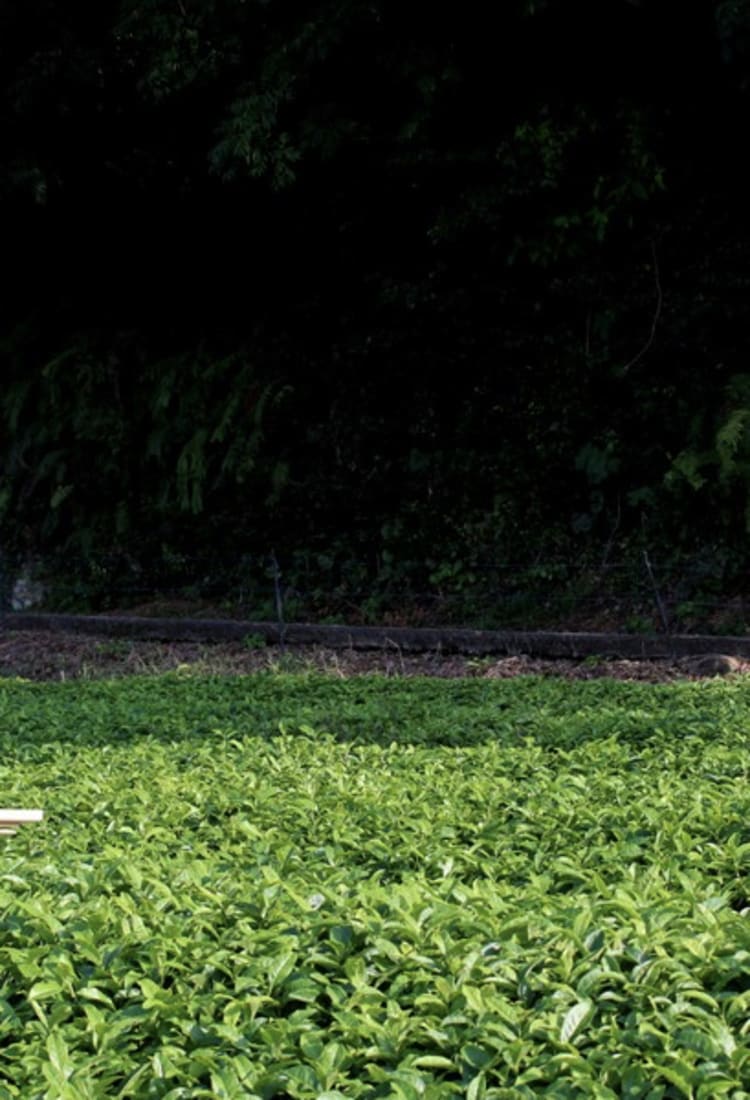
A unique Japanese tea tourism experience Journey to Ureshino for the complete tea, pottery, and hot spring experience
A unique Japanese tea tourism experience Journey to Ureshino for the complete tea, pottery, and hot spring experience
Three key elements define this unique Japanese tea tourism experience

Ureshino is located in the southwest part of Saga Prefecture. A valley surrounded by mountains on all sides, it enjoys a mild climate and has been a seat of Japanese tea culture since ancient times. There are some tea-making practices in Ureshino that have been carefully preserved for nearly five hundred years. One of these methods, is kamairicha, which involves pan-frying the leaves at high temperatures of 350–400ºC. Another is mushisei, in which freshly-picked tea leaves are steamed. This method was developed over the course of generations as the teamakers of Ureshino pursued ever more perfect taste.
One of the most distinctive characteristics of the longstanding Ureshino tea tradition is the shape of the tea leaves. Standard tea leaves tend to be long, thin, and straight, but Ureshino tea leaves have a curled shape. Other tea-producing regions use a fine rolling technique to straighten the leaves, but this process is not done in Ureshino—leaving the leaves to curl and retain its classic rich aromas and bitter-yet-sweet flavor profile. Another traditional practice that brings out the flavor of Ureshino tea is drinking it from local Hizen-Yoshida pottery. In fact, the locals insist that their tea simply cannot be properly enjoyed without it. Backed by nearly four centuries of history, the Hizen-Yoshida style of pottery remains an integral part of the local people’s lives even today.

As you delight in these two cultural traditions that evolved amidst Ureshino’s gorgeous natural landscape, remember that the area also offers a final element to complete your perfect travel experience: hot springs. Though there are countless hot springs in Japan, those in Ureshino are known for their high-quality water that leaves the skin feeling exceptionally soft and smooth. So much so that they are known as bihada-no-yu, or “skin-beautifying springs”. Also, because water here retains heat so well, it has long been praised for warming the local people to the core.
Ureshino tea, Hizen-Yoshida pottery, and distinctive hot springs. These three elements have given rise to a unique Japan tea tourism experience that interweaves the timeless, unique charm of the Ureshino region.
Exceptional tea deserves exceptional surroundings

The Japan tea tour package has its roots in the Ureshino Teatime Project, a collaboration between local tea farmhouses, Hizen-Yoshida potters, and traditional hot spring inns to bring together an innovative and creative expression of Japanese tea culture. In one example, visitors can actually enjoy Japanese tea brewed by the growers themselves in the middle of a tea field. Not only do the growers brew the tea, they also serve it in an unforgettable setting—surrounded by the high Soejimaen tea fields at an elevation of 200 meters. They call this area surrounded by lush tea plants Tenchadai—the “heavenly tea table”. The sweeping views from Tenchadai truly make it seem like a teahouse perched in heaven.
As if these stunning surroundings weren’t enough, guests are also treated to a unique tea experience led by the growers themselves. Taste the exquisite flavors of tea leaves that these experts grew, steamed, roasted, and blended themselves—an original brand developed exclusively for guests of the tea tour package. It is also available for purchase in the city of Ureshino at two longstanding Japanese inns: Wataya Besso and the Ryokan Omuraya. Ureshino tea is relatively rare and occupies just 1.5% of the Japan market share—making the luxurious experience of enjoying a premium cup brewed by the growers themselves that much more special.
There are two more distinctive spaces that are part of the Ureshino Teatime Project. The first is the hidden Mori-no-Chashitsu teahouse ensconced in a forest where you can hear nothing but the chirping of birds and the swaying of trees in the breeze. The second is the Yoshida Chashitsu, a bamboo teahouse on the grounds of Soesen Studios, one of the oldest Hizen-Yoshida pottery workshops in the area. There’s simply no better place to sip on authentic Japanese tea than these lovely spaces steeped in traditional Ureshino culture.
For inquiries about the Ureshino Teatime Project, send an email to

The beauty of the Japan tea tour package is that it takes you to Ureshino’s unique hot springs in addition to touring the area’s notable teahouses. Ureshino is home to many traditional Japanese inns—most notably the longstanding Wataya Besso and Ryokan Omuraya. Overnight guests have the luxury of soaking in the famous bihada-no-yu (skin-beautifying waters) of Ureshino both morning and night while delighting in the exquisite hospitality that only a traditional Japanese inn can provide as well as warm interactions with staff and locals alike. Meeting amazing people is part of the magic of travel, after all.
The teahouses in this Japanese tea-growing region offer opportunities to enjoy the locally-grown Ureshino tea and experience traditional Hizen-Yoshida pottery techniques. Along the way, travelers can melt all the stress and cares away in Ureshino’s renowned hot springs.
The best time to take a Japan tea tour is either in October or November, or around May when the fresh tea leaves are picked. Enjoy an immersive experience of three aspects of traditional Japanese culture made possible through the collaboration among tea farmhouses, potters, and hot spring inns.




















































